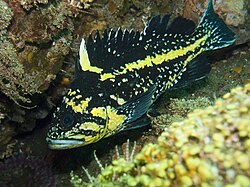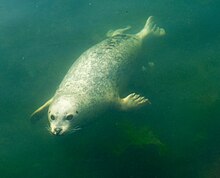Northern (Pinto) Abalone
The Northern or Pinto Abalone is a marine snail (marine gastropod mollusc to be exact) that has been listed as an endangered species under SARA (Species at Risk Act) since 2009 due to overfishing, overharvesting, and poaching. Abalone are prized because their inner shell is made of iridescent white mother-of-pearl (you have probably seen them dangling on earlobes as jewellery) and because people love to eat them! Apparently they taste great on the grill, but I still prefer hamburgers.
Northern Abalone are one of the seven species found on the West Coast (others being the black, white, pink, red, green, and threaded abalone) with a range from Sitka, Alaska to Point Conception, California. They are found with kelp on rocks, and are about 18 cm (7 in) in size. They have a flat, thin, oval-elongated single shell with a shallow spiral, and the exterior colour of the shell changes from mottled green to reddish-brown depending on what it eats (I wonder what it would look like after eating Skittles??) Its distinctive feature is 3 - 6 open holes (respiratory pores) along the left side. The Abalone has a head with tentacles and eyes, gills, and a large, cream-yellow coloured foot to hold it to rocks.

The Northern Abalone are herbivorous and live off tasty bacterial scum and diatom (phytoplankton) when they are young, and seaweeds like bull kelp as an adult. When they are not eating, they hide under rocks to avoid being a meal themselves, especially for hungry sea otters, sea stars, octopus, crabs, fish, river otters, minks, birds and humans having a BBQ.
Unfortunately, the Northern Abalone is in decline. British Columbia’s commercial fishery was closed in the early 1990s, and poaching is a real threat. I would not suggest trying to catch them, because if you are caught, the maximum fine is $500,000 and two years in jail for poachers, restaurants, and seafood sellers!

Genus: Haliotis (means ear shell) http://wdfw.wa.gov/conservation/pinto_abalone/
https://halejessie.wordpress.com/2012/03/05/what-are-abalone-and-why-are-they-so-awesome/















